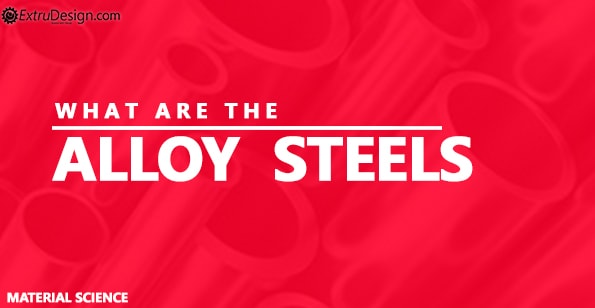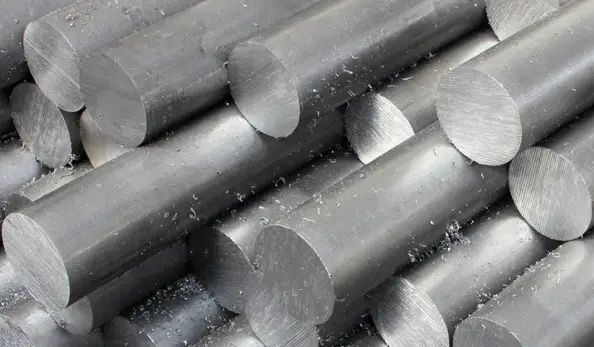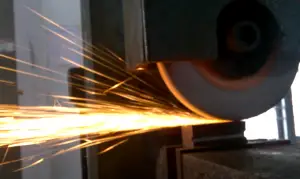Steel is the alloy of iron and carbon. Other than these two elements we can add few other elements in order to get desired mechanical properties. those are known as the alloys of steel. These will be having the more or fewer compositions. The Alloy elements are silicon, chromium, manganese, copper etc.

Purpose of Adding Alloying elements to the Steel
- To improve the machinability.
- Increase in hardenability of machine components.
- Refinement of grain size and increase the toughness.
- Increase in corrosion resistance.
- Increase heat resistance.
- Increase in strength.
- Reduce the fatigue failures.
- Magnetic properties improvement.
Alloy Steels
Alloy steels may consist of different chemical elements up to 50% in the total composition in order to get the required mechanical properties.

The following are the different chemical elements other than the iron and carbon in Alloy Steels to attain different mechanical properties.
- Manganese (the most common one)
- Nickel
- Chromium
- Molybdenum
- Vanadium
- Silicon
- Boron
- Tungsten
- Copper
- Cobalt
- Lead
- Zirconium
The percentage of these are not mentioned here. To attain different mechanical properties, the compositions varied respectively according to their properties.
Let’s see how these different alloy elements can affect the physical properties of the steel and become alloy steels.
Effect of Manganese on Steel
- Increases the hardenability.
- Carbide forming element (Helps steel to attain the ability to gain the hardness)
- Lowers the melting point.
- Decreases the critical temperatures.
Effect of Nickle on Steel
- Increases the Tensile strength by maintaining the ductility.
- Refinement of grain size and increase the toughness.
- Lowers the coefficient of thermal expansion.
- Reduces the rusting
- A little increment in Hardness
Effect of Chromium on Steel
- Increase the strength.
- Increase the hardness with the effect the ductile capability.
- Increases the critical temperatures.
- Carbide forming element (Helps steel to attain the ability to gain the hardness).
- Increases the hardenability and the toughness.
Effect of Molybdenum on Steel
- High Carbide forming tendency (Helps steel to attain the ability to gain the very much hardness)
- Imparts the red hardness, hot strength and the toughness.
- Increases the corrosion and abrasive resistance.
Effect of Silicon on Steel
- Improves the magnetic permeability.
- Improves the electrical resistivity capability.
- Increase the ultimate strength without losing the toughness capability.
- Can acts as the De-oxidiser (Able to resistance to the oxidation).
- Can intensify the effect of the other alloy elements like Molybdenum, manganese and chromium.
Effect of Vanadium on Steel
- Increases the Tensile strength and ductility
- Can attain the fine grain size.
- High Carbide forming tendency (Helps steel to attain the ability to gain the very much hardness)
- Increases the hardness and the toughness.
Effect of Boran on Steel
- Adds the hardness to the steel
- Increase the plasticity
Effect of Tungsten on Steel
- Imparts the red hardness, hot strength and the toughness.
- High Carbide forming tendency (Helps steel to attain the ability to gain the very much hardness)
- Stops the grain growth and increases the cohesive forces.
Effect of Copper on Steel
- Increases the strength.
- Increases the hardness
- Lowers the ductile capability.
- Increases the corrosion resistance.
Effect of Cobalt on Steel
- Adds the Excellent magnetic properties.
- Increases the red hardness in the high-speed steels.
Effect of Lead on Steel
- Increases the machinability
Effect of Zirconium on Steel
- Used as the oxidiser.
- Able to produces the fine grain size.
Available Shapes for Alloy Steels
Alloy steel can be available in the form of sheets, Flat Bars, Billets, Forgings, Hollow Sections, Rings. The sizes and thicknesses may be different for the different grades of the alloy steel.
Conclusion
All these alloys will influence the structure (graphitising or carbide forming) of the steel to attain the mechanical properties. Read more details about the alloy steel here


Leave a Reply